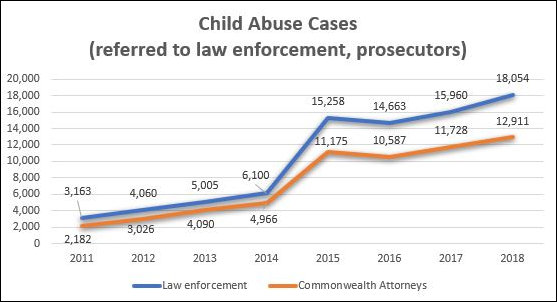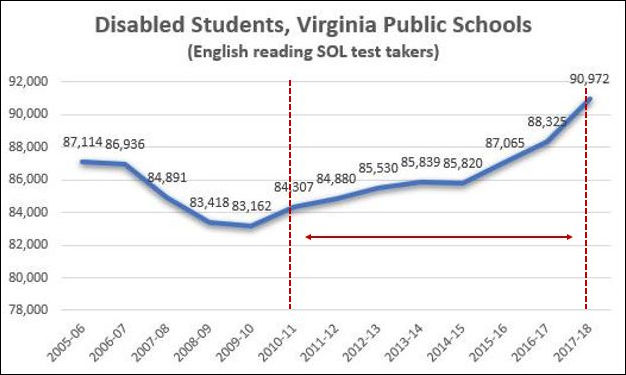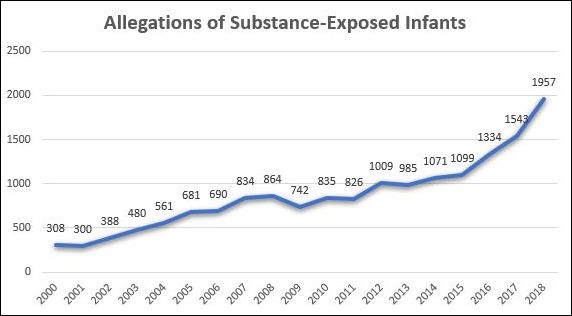Virginia public schools are swamped by an increasing number of children afflicted with disabilities, the vast majority of which are emotional or cognitive in nature. Schools are experiencing a silent crisis as they try to accommodate a growing cohort of students who have a legal entitlement under the law to a greater share of resources and who, when mainstreamed, often disrupt the education of their classmates. Given society’s commitment, born of compassion, to educating children with disabilities in the least restrictive environment, schools are caught in a tightening vice.
How did we get here? Why are there so many needy children? Has it always been this way? Have American schools always had a large percentage of children whose needs simply went unrecognized — or, as it often feels, are things getting worse? And if they are, why?
The Office of Child Protective Services compiles data on child abuse and neglect. The chart above, taken from CPS data, make it clear that that child abuse/neglect has been on the rise at least since 2011.
The chart has two measures. One is the number of cases reported to law enforcement, and the other is the number referred by law enforcement to commonwealth attorney offices. The metrics move more or less in tandem. A spike occurred between 2014 and 2015, possibly reflecting a change in policy or the method of reporting or tabulating the data. While not every case handed off to a prosecutor leads to a conviction, the trend line is indicative of the direction society is moving in.
In a recent post, I argued that many disability issues — impulse-control, emotional self-regulation, and violent temper — stem from physical, emotional and/or sexual abuse a student suffered early in life. Thus, a rise in child abuse cases predicts, after a few years’ delay, an increase in the number of students with disabilities. The time frame of the child-abuse graph above coincides with the years indicated by red lines in the graph below, which shows the increase in the number of disabled students in Virginia public school system.
Assuredly, there is a connection between the 10,000-per-year increase in the number of child abuse/neglect cases and the 6,600 increase in the number of students in Virginia schools classified as disabled. Indeed, the data suggests that the actual number of students with disabilities might be under-counted, possibly because fiscally stressed schools do everything they can to suppress the numbers.
The Office of Child Protective Services provides data for second metric of social dysfunction: newborns who had been exposed to alcohol and drugs in the womb.
While the infants might recover from the substance addiction, the statistic is frightening. Unless mothers addicted to crack and opioids clean up their act, their children will continue suffering from abuse and neglect. Thus, the near doubling in the past five years in substance-exposed infants is a likely predictor of future child abuse and child neglect cases, and then of future children with severe disabilities in Virginia schools.
From a statistical perspective, this is what social breakdown looks like. The human stories are a thousand times more tragic. As schools become the go-to institution to fix the problems created by drugs, poverty and family dysfunction, the fiscal pressures will only increase and the all-too-evident flaws in the educational system will only intensify.
In a better world, teachers would get more pay and every child would attend school in a school building in a state of good repair. But except in rare instances, underpaid teachers and aging buildings are not where Virginia’s school systems are melting down. As legislators decide where to allocate scarce resources, they should address the problem at the source: horrible parents who abuse their children.





